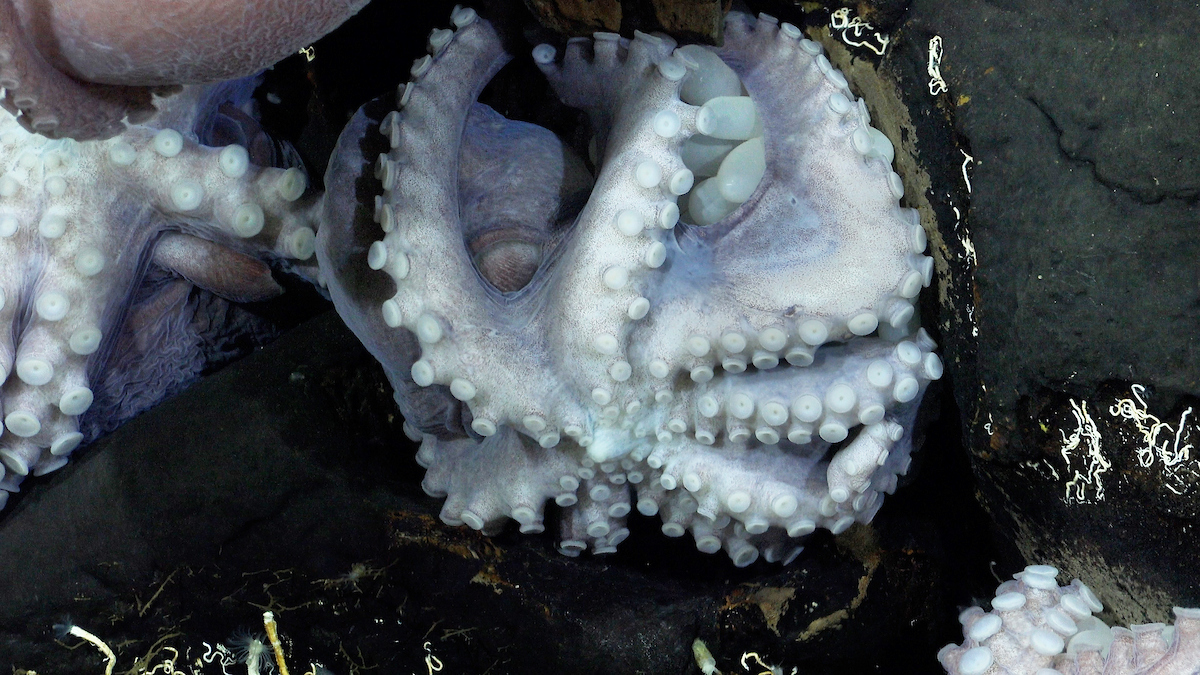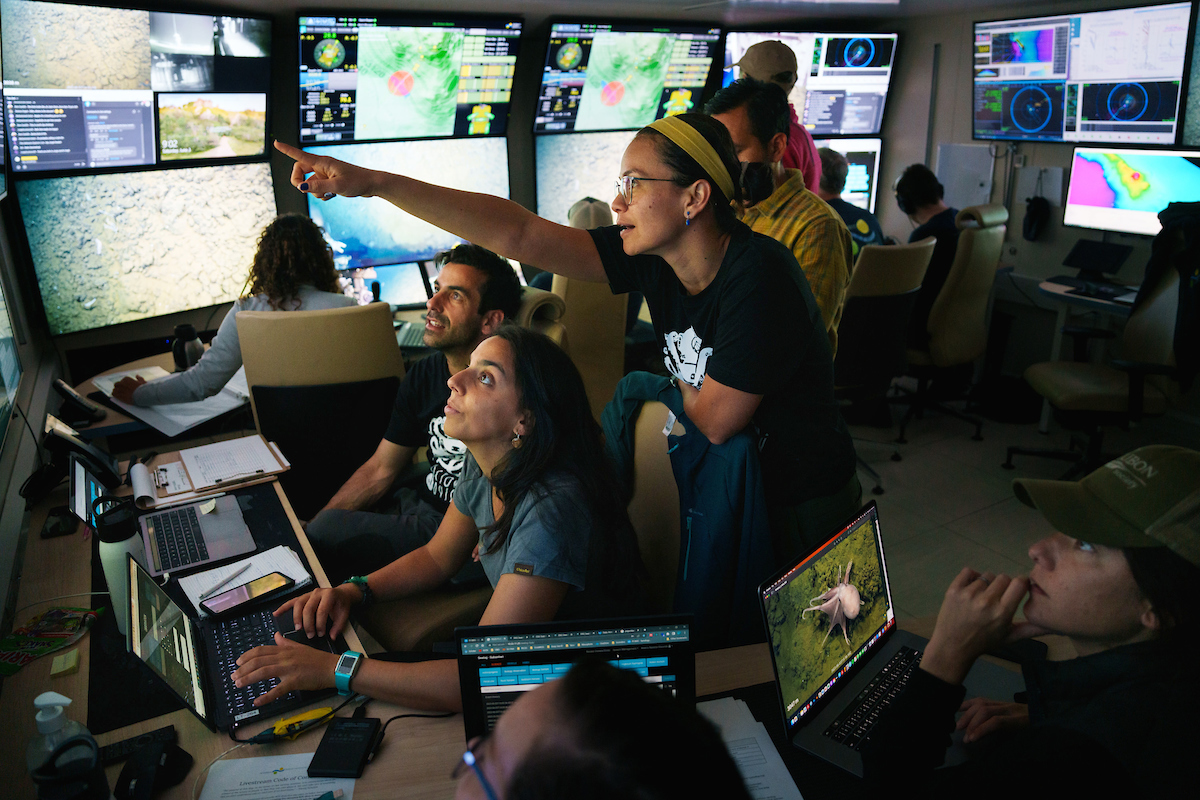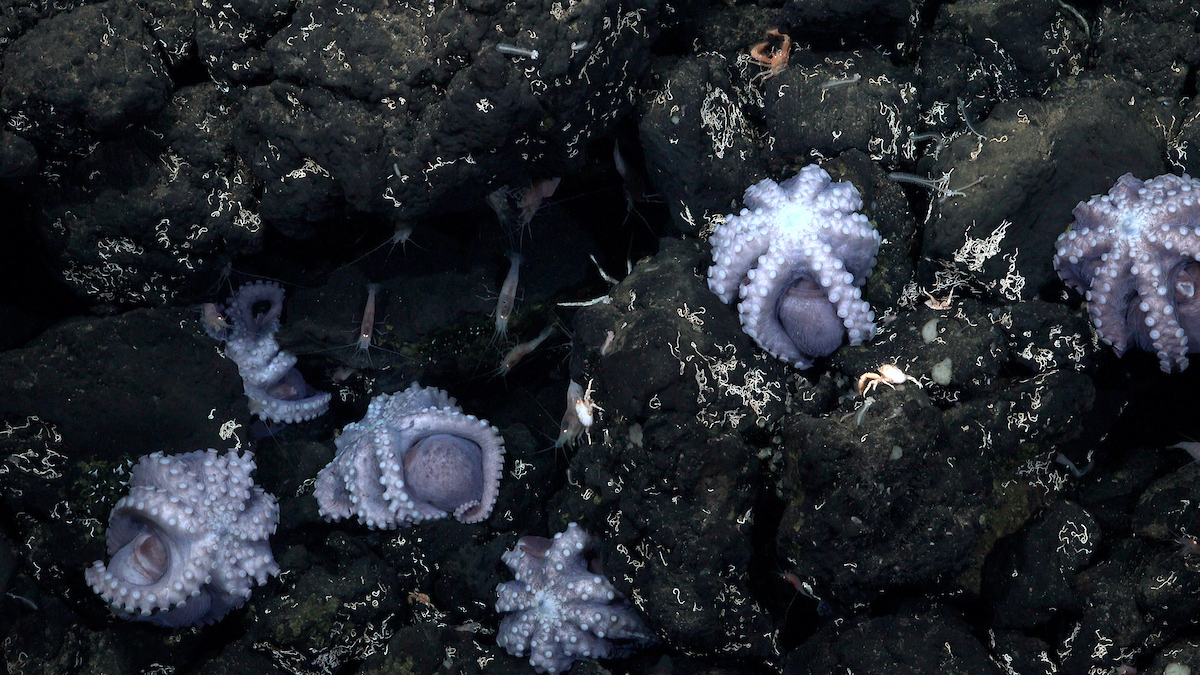A team of international scientists has discovered a new deep-sea octopus nursery at a low-temperature hydrothermal vent off Costa Rica. The discovery of the brooding site brings the number of the world’s only known octopus nurseries to three.
The octopus aggregation at the Dorado Outcrop is potentially a new species of Muusoctopus, a genus of small to medium-sized octopus without an ink sac. This reinforces the idea that some species of deep-sea octopus seek out low-temperature hydrothermal vents for brooding their eggs.

The international Scientists aboard Schmidt Ocean Institute’s research vessel Falkor (too) witnessed the Muusoctopus species hatch, disproving the idea that the area is inhospitable for developing octopus young. The Dorado Outcrop nursery was originally discovered in 2013 and astonished scientists, as it was the very first observation of female octopus gathering together to brood their eggs. No developing embryos were seen when the site was first explored, leading scientists to believe conditions at the Dorado Outcrop might not support octopus growth.
Five never-before-seen seamounts in the northwestern corner of Costa Rica’s waters were also explored and contained thriving biodiversity and hundreds of animals, many of which are suspected to be new species, according to the Schmidt Ocean Institute.

“The discovery of a new active octopus nursery over 2,800 meters beneath the sea surface in Costa Rican waters proves there is still so much to learn about our Ocean,” said Schmidt Ocean Institute Executive Director, Dr. Jyotika Virmani. “The deep-sea off Costa Rica rides the edge of human imagination, with spectacular footage collected by ROV SuBastian of tripod fish, octopus hatchlings, and coral gardens. We look forward to continuing to help the world witness and study the wonders of our incredible Ocean.”
The seamounts, including the Dorado Outcrop, are unprotected from human activities like fishing. Half of the science team was composed of Costa Rican scientists, some of whom are working to determine if the seamounts warrant protection and should be designated marine protected areas.
“This expedition to the Pacific deep waters of Costa Rica has been a superb opportunity for us to get to know our own country,” said Cortes. “The expedition had a significant number of local scientists and students which will accelerate our capacity to study deep regions. The information, samples, and images are important to Costa Rica to show its richness and will be used for scientific studies, and outreach to raise awareness of what we have and why we should protect it.”



